好莱坞不止有经典影像和文化符号——梦露手扶白裙,金发飞扬,笑靥如花;赫本伫足在纽约第五大道的蒂凡尼橱窗前一脸向往;邦德优雅得体的布莱奥尼西装和飞驰如风的阿斯顿·马丁座驾;上世纪60年代“It Girl”伊迪·塞奇威克万年不变的短发和夸张的假眼睫毛。这里还有伊丽莎白·泰勒八次婚姻和她手上硕大的钻石;有保罗·纽曼湛蓝的双眸以及与妻子相濡以沫半个世纪的婚姻;有“坏女孩”琳赛·罗翰把入狱当成自个儿的人生大秀,也有“好女孩”娜塔丽·波特曼兢兢业业,勤勤勉勉,学业事业两不误……这里有爱情,有悲情,有戏剧,也有人生。在光与影的世界,有人爱用失焦的镜头展现普通人的无奈,有人偏好以长镜头来记录名人璀璨的一生。
有人说,百年的好莱坞,已经失却了昔日的细腻与温润,有人说,百年的好莱坞,上演的是人生的悲欢与离合。好莱坞,其实,有的是一群追梦人对艺术孜孜不倦的追求,有的是小人物一夜成名的“奇迹”,更有各方权力的角力,人与人之间的“金枝欲孽”。台上的人做戏,台下的人看戏,好莱坞有自己的表现方式,而我们,则有各自的看戏心情。 ——Mac
文字难度:★★★ ☆
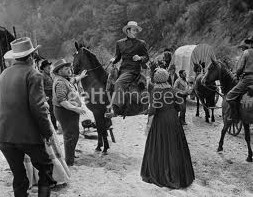 March of 2010 marks the 1)centenary of In Old California, a 17-minute adventure 2)yarn directed by 3)D.W. Griffith, and the first Hollywood production. Here is an account of the changes in film and US society in the past century.
March of 2010 marks the 1)centenary of In Old California, a 17-minute adventure 2)yarn directed by 3)D.W. Griffith, and the first Hollywood production. Here is an account of the changes in film and US society in the past century.
2010年3月,好莱坞首部电影《在古老的加利福尼亚》诞生一百周年,这是一部长达17分钟的历险记,由大卫·格里菲斯执导。而以下叙述的是在过去一百年里美国电影业和社会的变迁。
1910—1919: the Birth of Hollywood
According to Hollywood myth, the first film made there was Cecil B. DeMille’s The 4)Squaw Man in 1914. In fact, four years earlier the prolific D.W. Griffith had come west to take advantage of the California sunshine, and the 17-minute In Old California, an adventure set in Spanish colonial days, was the first to be filmed in its entirety in the village of Hollywood. 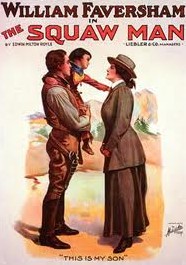 1910年—1919年:好莱坞的诞生
1910年—1919年:好莱坞的诞生
根据好莱坞传说,第一部在好莱坞拍摄的电影是1914年塞西尔·B·戴米执导的《娶了印第安女人的白人》。然而事实上,早在那之前的四年前,多产导演大卫·格里菲斯已经西行至加州,利用当地充足的阳光拍摄影片,而《在古老的加利福尼亚》是第一部完完全全在好莱坞庄园拍摄的电影,该片长17分钟,是一部以西班牙殖民时代为背景的历险记。
1920—1929: The 5)Advent of Sound
After the First World War, a business created 6)piecemeal by immigrants, most of them Jewish, was shaped into an industry dominated by a handful of studios that not only made films, but also distributed and exhibited them, and had established offices worldwide. Some of Europe’s greatest talents were lured to Hollywood, while silent cinema was refined into a new art in the comedies. To 7)aggrandize the business and 8)fend off unionization, 9)Louis B. Mayer founded the Academy of Motion Picture Arts and Sciences and its Oscars. Within two years silent movies were assigned to archives, and the industry faced massive bills for soundproofing studios and re-equipping cinemas.
1920年—1929年:有声电影的出现
一战后,电影这门主要由犹太移民一点点地创建起来的小生意,渐形成了一个被少数几家制作公司完全垄断的行业。这些制作公司不但制作电影,还兼顾发行和放映,并在世界各地设立分部。欧洲的一些人才被吸引至好莱坞,与此同时,在一系列的喜剧中,无声电影的制作愈加精良,已发展成一种新兴艺术。为了壮大电影业并打破垄断,路易斯·B·梅尔建立了电影艺术与科学学院,并设立了奥斯卡奖。不到两年,无声电影成为历史,而电影产业因具有隔音效果的播放室和经过重新装备的影院而赚得盘满钵满。
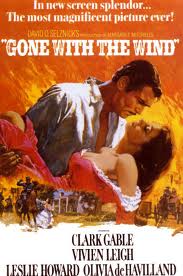 1930—1939: the Age of 10)Technicolor
1930—1939: the Age of 10)Technicolor
Hollywood’s greatest decade began with the advertising slogan “11)Garbo talks!” Sound pictures brought a flood of new writers to 12)Tinseltown, ranging from 13)wisecracking newspapermen to14)William Faulkner. The Depression was confronted through 15)double bills and cheaper tickets, and responded to by escapism and sharp social criticism. Genres were 16)codified. Disney moved from programme-filling shorts to the feature-length Snow White. The decade peaked in 1939 when Technicolor came into its own; this was the greatest year in Hollywood’s history, with The Wizard of Oz and Gone with the Wind among its peaks.
1930年—1939年:“染印法彩色”的年代
随着宣传口号“嘉宝说话了!”的打响,好莱坞进入了最辉煌的十年。有声电影的出现给“浮华镇”带来了大量的剧作新力军,其包括从妙语连珠的记者到著名作家威廉·福克纳这样的人物。在“大萧条”时期,电影业只好以“买一赠一”的优惠措施和降低票价来应对,逃避主义和尖锐的社会评论无处不在。电影被系统地整理划分成不同类型。迪斯尼从制作穿插在电影播放间隙的小短片转移到拍摄正片长度的电影,如《白雪公主》。1939年,随着“染印法彩色”为电影制作带来喜人效果,好莱坞达到了繁盛的顶峰;在这好莱坞历史上最辉煌的一年里,涌现了许多巅峰之作,包括《绿野仙踪》和《乱世佳人》。
 1940—1949: the Movies Go to War
1940—1949: the Movies Go to War
The Hollywood novel, taking the industry as a metaphor for capitalism or America itself, became firmly established in 1941. That year Hollywood 17)retooled for war. Stars, directors, and technicians joined the armed forces; those staying behind sold 18)war bonds and appeared in 19)propagandist entertainments. Two new genres appeared—the patriotic war movie 20)demonizing Japanese and Germans, and the dark thriller much influenced by brilliant refugees from Nazi Germany 21)versed in 22)expressionism.
1940年—1949年:电影加入战争
在1941年,好莱坞故事已稳占主流,让电影业成为“资本主义”或者“美国”本身的代名词。同年,好莱坞全新武装起来,加入战争。影星、导演和技术人员纷纷加入军队;在后方的电影人则售卖战争债券和参与战争宣传表演。此时出现了两种电影类型:一种是将日本和德国妖魔化的爱国主义战争片;另一种是深受纳粹德国难民影响的晦暗惊悚片,这些聪明的难民精于将表现主义运用到电影中。
1950—1959: the Battle with Television
In 1950 the Cold War went hot in Korea, 23)Huac’s pressure on the industry increased, and an arbitrarily compiled blacklist drove many leftwing artists out of Hollywood to work elsewhere or sell scripts cheaply for others to take the credit. This atmosphere of suspicion and fear was exacerbated by the spread of TV, eroding the popular core audience, and by the effect of anti-24)monopoly legislation that compelled the big studios to divest themselves of their cinema chains. The industry fought back with bigger screens and 3-D.
1950年—1959年:与电视争天下
1950年美国对朝鲜冷战“如火中天”,众议院非美活动调查委员会对电影业不断施压,无甚根据便随意开出一份黑名单,这使得许多左翼艺人纷纷逃离好莱坞,在其他地方另觅生计或者贱卖剧本让他人领功。这种猜疑和恐惧的气氛随着电视的普及而加剧,并且侵蚀了主流核心观众,同时,反垄断法的出台迫使大制作公司从电影发行的相关环节中抽身出来。于是电影业以超大屏幕和三维效果来反攻。
1960—1969: The European Threat
The decade opened on a hopeful note with 25)Otto Preminger and 26)Stanley Kubrick both giving the blacklisted 27)Dalton Trumbo, a leading member of the 28)Hollywood Ten, his first screen credits since the 1940s. But front office men were still running scared. They refused to confront the war in Vietnam that was dividing the nation and were confused in the face of foreign competition that was more innovative, imaginative, and liberated than a Hollywood 29)hobbled by 30)censorship and led by veterans approaching the end of their careers.
1960年—1969年:来自欧洲电影的挑战
上世纪六十年代一开始就透出了希望之光,因为奥托·普雷明格和斯坦利·库布里克都起用了被列入黑名单的达尔顿·特朗勃,这位“好莱坞十君子”的领军人物自上世纪四十年代后首次重投好莱坞电影的怀抱。但是制作方依然胆战心惊。他们不愿直面造成越南本国分裂的越南战争,面对国外的竞争,他们不知所措,好莱坞受着政治审查的束缚且由已接近事业末路的越战老兵主导,相比之下,外国影片更加创新,更富想象力,自由度也更大。
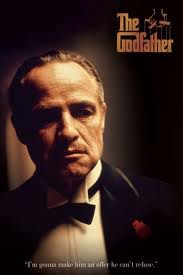 1970—1979: Hollywood Strikes Back
1970—1979: Hollywood Strikes Back
Young directors—the movie 31)brats, graduates of film schools and obsessed with movies—were32)given their heads. They dominated the decade after 33)Coppola had brought together the Hollywood gangster tradition, The Godfather. A new form of 34)blanket distribution was brought into play to launch Steven Spielberg’s Jaws, along with George Lucas’s Star Wars, and it helped renew the cinema-going habit and started a vogue for childlike special-effects 35)blockbusters. Woody Allen countered by providing more adult fare in 36)Annie Hall, in the course of which he explicitly showed his distaste for the drug-fuelled Hollywood world.
1970年—1979年:好莱坞绝地反击
年轻导演——电影毛头小子,一群沉迷于电影的影视学院毕业生——有了自由创作的空间。当科波拉通过电影《教父》把好莱坞的帮派电影传统整合起来之后,这些年轻一代开始统领上世纪七十年代。一种新型的全配套影片发行方式应运而生,史蒂 文·斯皮尔伯格的《大白鲨》和乔 治·卢卡斯的《星球大战》均以此方式推出,这使大众到影院看电影的习惯得以恢复,同时开创了充满孩童式想象的特效大片的潮流。伍迪·艾伦却反其道而行之,拍摄出包含更多成人元素的《安妮·霍尔》,他通过该片明确地表达出对充斥着毒品这样的好莱坞世界的厌恶。
1980—1989: the 37)Suits Regain Control
A succession of expensive failures culminated during this period. The movie brats were overreaching themselves, and accountants and other 38)fiscally responsible folk 39)brought them to heel. In 1980 Robert Redford created the 40)Sundance Institute in Utah to encourage independent film, and it seemed as if US cinema was developing on parallel lines. One was the Hollywood way: commercial, conventional, and exorbitantly expensive. The other, which some thought more authentically American, was the independent track: experimental, 41)offbeat, moderately budgeted.
1980年—1989年:投资人重握大权
高投资大片连番受挫的局面终于在这一时期得到扭转。那些电影新鲜人不自量力,眼高手低,这时,会计师和其他财务人员会用现实使他们屈服。在1980年,罗伯特·雷德福在犹他州建立了圣丹斯协会,鼓励独立电影的制作,从此美国电影似乎发展出了两条平行的风格路线。一条是好莱坞路线:商业化的、传统的,而且投入异常高的电影。另一条是独立路线:实验性的、另类的、成本较低的电影,有些人认为其更加真实地反映美国现状。
1990—1999: Animation Makes a Comeback
The 1990s saw a succession of major studios changing hands and the setting up of subsidiaries to finance or distribute smaller-scale independent productions, often bought directly at the Sundance Festival. Animated films made a major comeback at Disney and Pixar. A number of American horror films suggested that Satan himself might take over the world as the millennium dawned.
1990年—1999年:动画片回归
在上世纪九十年代,大制片厂纷纷易主,而许多子公司建立起来,以资助或发行低成本的独立电影制作,这些独立电影常常在圣丹斯电影节上被买家看中。迪士尼和皮克斯动画工作室制作的动画片大举回归。一些美国恐怖片暗示在千禧年到来的时候,魔鬼撒旦将会统治世界。
2000—2009: a Sense of 42)Déjà-vu 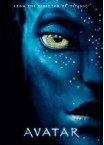 Nobody knew exactly how this decade should be pronounced or what to make of it. Actors and everyday reality are being pushed aside by computers, and 3-D is back. It is perhaps appropriate that Hollywood’s centenary is being marked by James Cameron’s Avatar, the most expensive film ever, the most profitable film ever, made in 3-D, its story a 43)mishmash of borrowings from all over, and almost every frame of it indebted to an army of special effects technicians. It’s a picture economically dependent on being shown to a gigantic global audience.
Nobody knew exactly how this decade should be pronounced or what to make of it. Actors and everyday reality are being pushed aside by computers, and 3-D is back. It is perhaps appropriate that Hollywood’s centenary is being marked by James Cameron’s Avatar, the most expensive film ever, the most profitable film ever, made in 3-D, its story a 43)mishmash of borrowings from all over, and almost every frame of it indebted to an army of special effects technicians. It’s a picture economically dependent on being shown to a gigantic global audience.
2000年—2009年:似曾相识的感觉
没有人知道要这个年代如何形容,或者说出其特点。电脑技术把演员和日常现实生活挤到一边,三维技术回归电影业。也许准确来说,好莱坞百年庆中最大的亮点是詹姆斯·卡麦隆的《阿凡达》——这部有史以来造价最高、盈利最丰厚的电影。该片用三维技术拍摄制作,故事将借用的各种元素混杂在一起,片子的每一个画面都少不了一群特效人员的功劳。这部电影的利润依赖于全球票房的巨额收入。


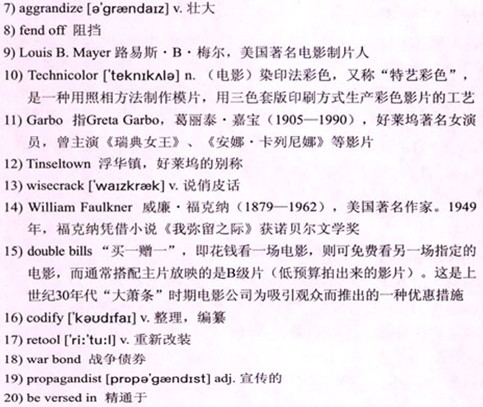
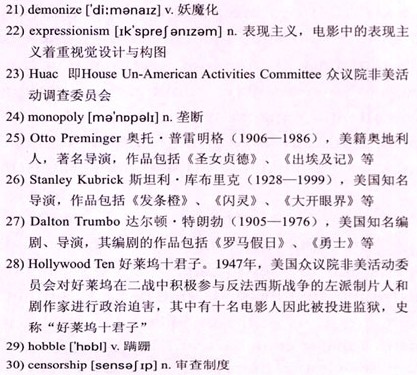
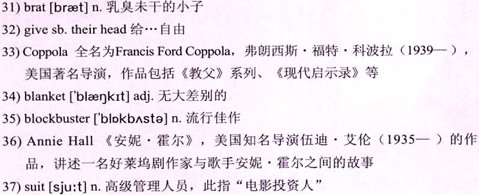
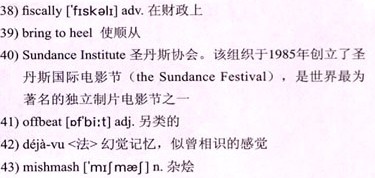
小资料
不该被遗忘的经典影片 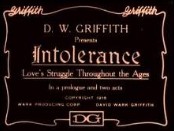 以下是本文作者French推荐的几部经典电影。这些电影年代久远,但是其艺术价值却不可小觑。为此小编特地整理了一下相关内容,让各位一窥经典的魅力。
以下是本文作者French推荐的几部经典电影。这些电影年代久远,但是其艺术价值却不可小觑。为此小编特地整理了一下相关内容,让各位一窥经典的魅力。
Intolerance 《党同伐异》(1916年)
本片讲述了四个发生于不同历史时期,年代跨度超过2000年的故事。导演格里菲斯用四个截然不同的故事表现“偏执”这一主题。影片使用了史无前例的剪辑手段,每个故事被分割成细小的片断,经过重新排列后交替出现。这种先进的电影理念超越了他所处的时代。虽然票房上遭遇惨败,但是其意义深远。
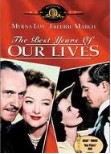 The Best Years of Our Lives《黄金时代》(1946年)
The Best Years of Our Lives《黄金时代》(1946年)
本片把触角伸向大家视而不见的地方,从炮火散去后的平淡中挖掘出战争在人们心中留下的创伤和永恒的亲情。本片在二战结束的次年推出,荣获第19届奥斯卡7项大奖,其中扮演断臂军人的演员是真的残疾军人,他除了获得最佳男配角,还因“把希望和勇气带给退伍军人”得了一个特别奖。
 High Noon《正午》(1952年)
High Noon《正午》(1952年)
本片是影史上的经典西部片之一,描写一名小镇警长在无法寻得帮助的情况之下,只身对抗四个前来报仇的恶徒。一部反映正义与邪恶之间对抗的影片,剧情简单,却具有象征意义,表明了正义有时在少数人手中这一主题。主题歌《亲爱的,别抛弃我》穿插在影片中,起到了明显的点题作用。
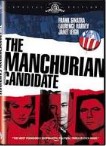 The Manchurian Candidate《谍影迷魂》(1962年)
The Manchurian Candidate《谍影迷魂》(1962年)
故事背景设在朝鲜战争之后的美国,劳伦斯·夏威返国时被视为英雄,但是他渐渐发现浮华背后隐藏了一个巨大的秘密,于是他着手调查真相。这是一部黑色政治惊险片,意象突出,同时讽刺了美国的左派和右派。
